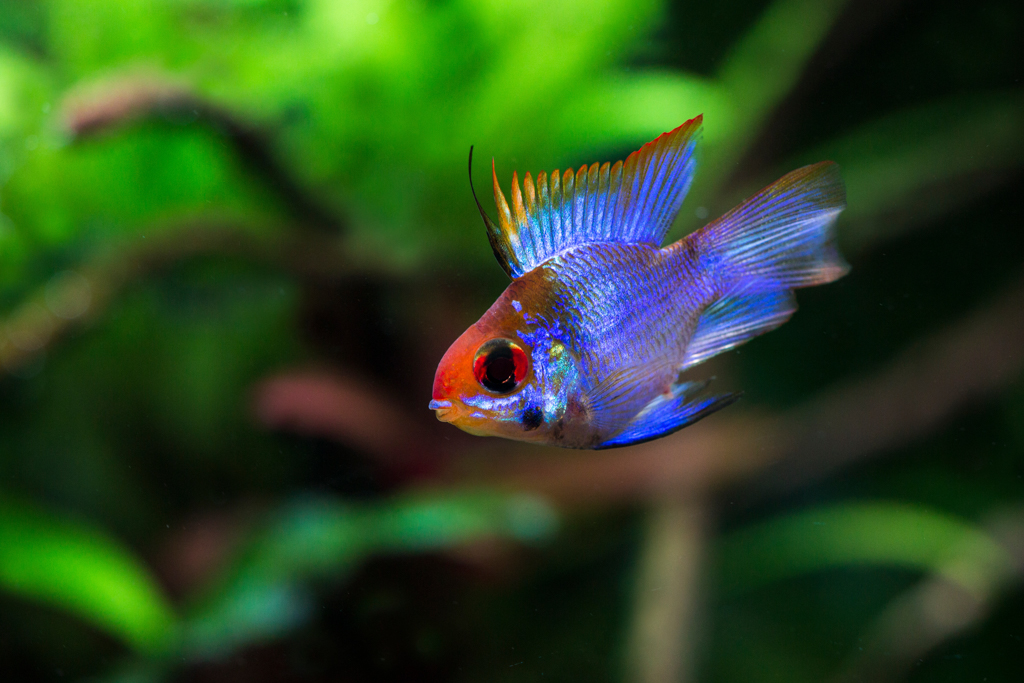The Mikrogeophagus ramirezi, commonly known as the Ram cichlid or the German blue ram, is a small and colorful freshwater fish that is native to the Orinoco River basin in South America. This fish is a popular choice for aquarium enthusiasts due to its striking appearance, peaceful demeanor, and relatively easy care requirements.
Physical Characteristics
The Mikrogeophagus ramirezi is a small fish that typically grows to be around 2-3 inches in length. It has a rounded, elongated body shape with pointed dorsal and anal fins. Its body is covered in bright, iridescent scales that can range in color from deep blue to golden yellow. The most common color variation of this fish is the blue and yellow variant, which has a bright blue body and yellow fins. There are also other variants, such as the gold and electric blue, that have different colorations.
Habitat and Tank Requirements
The Mikrogeophagus ramirezi is native to slow-moving streams and rivers in South America, and its natural habitat consists of sandy or gravelly substrate with scattered vegetation. When kept in an aquarium, it is important to replicate these natural conditions as closely as possible to ensure the health and well-being of the fish.
The ideal tank size for a pair of Mikrogeophagus ramirezi is at least 20 gallons, although larger tanks are recommended if you plan to keep a group or a community tank. The water temperature should be kept between 78-82 degrees Fahrenheit, and the pH level should be between 6.0-7.0. These fish prefer soft, slightly acidic water, so it is recommended to use a good quality water conditioner to ensure optimal water conditions.
Behavior and Compatibility
The Mikrogeophagus ramirezi is a peaceful fish that can be kept with other peaceful species, such as tetras, gouramis, and dwarf cichlids. However, it is important to avoid keeping them with aggressive or larger fish, as they may become stressed or injured. These fish are also known to be territorial, especially during breeding, so it is recommended to keep only one pair in a tank to avoid conflicts.
Breeding
Breeding Mikrogeophagus ramirezi is relatively easy, and these fish are known for their excellent parental care. To encourage breeding, it is recommended to provide the fish with plenty of hiding places, such as caves or plants, and to ensure that the water conditions are optimal.
Once the eggs are laid, the male will guard and care for them, while the female will protect the territory around the breeding site. The eggs will hatch in about 2-3 days, and the fry will be free-swimming within 4-5 days. The parents will continue to care for the fry until they are large enough to fend for themselves.
Conclusion
The Mikrogeophagus ramirezi is a beautiful and peaceful fish that is a great addition to any community tank. With proper care and attention, these fish can live for up to 3-5 years in captivity. They are relatively easy to care for and breed, making them a great choice for both beginner and experienced aquarium enthusiasts. If you are looking for a colorful and peaceful fish to add to your tank, the Mikrogeophagus ramirezi is definitely worth considering.



















![]()
